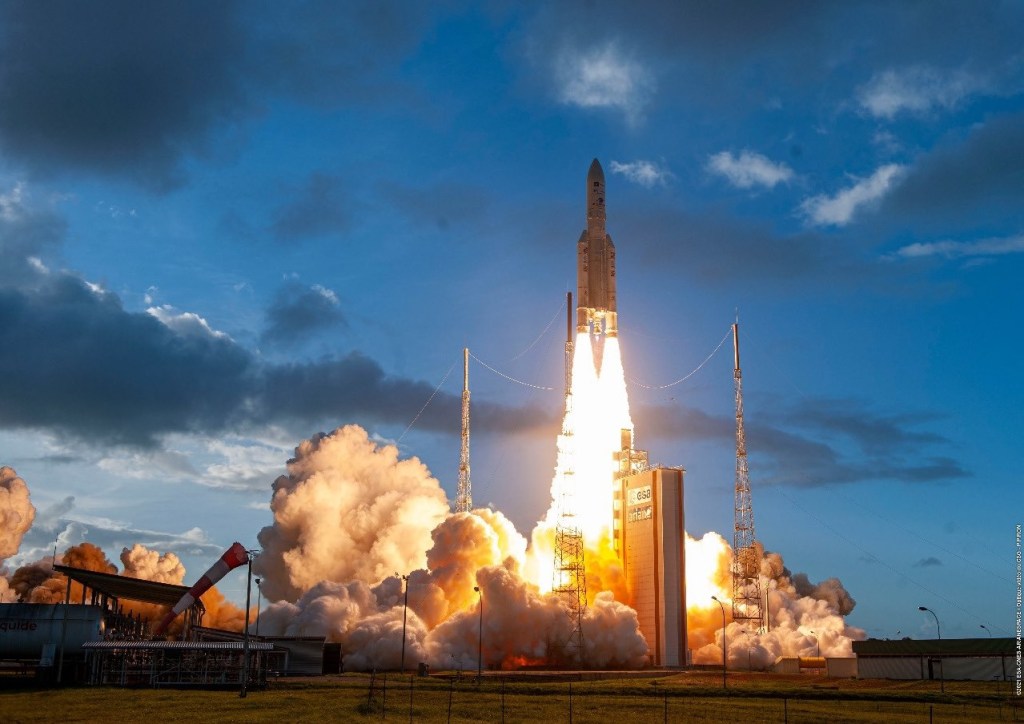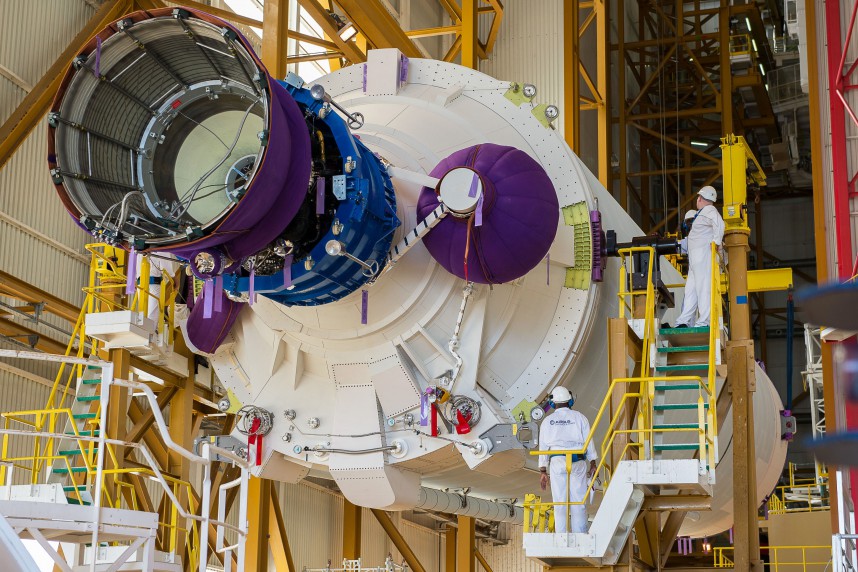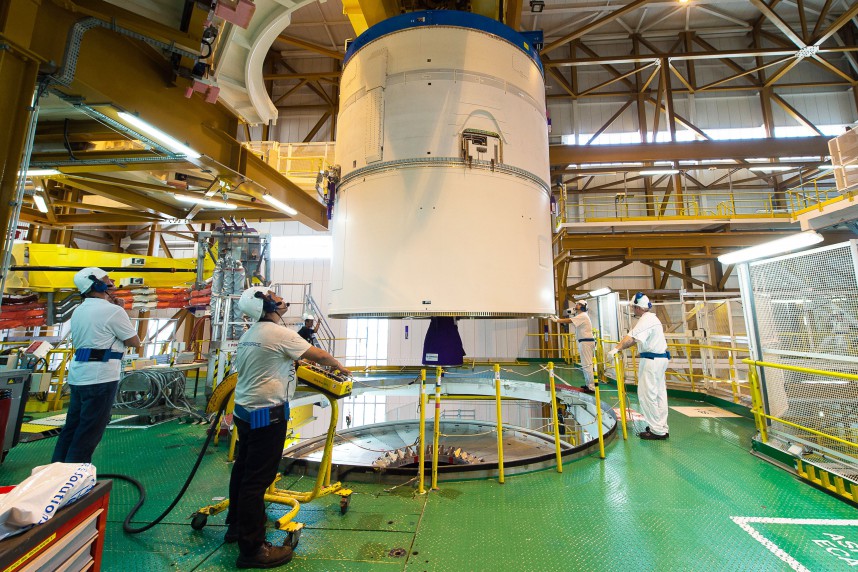Featured Image: Arianespace
Lift Off Time | September 07, 2022 – 21:45 UTC | 18:45 GYT |
|---|---|
Mission Name | Eutelsat Konnect VHTS |
Launch Provider | Arianespace |
Customer | Eutelsat Communications |
Rocket | Ariane 5 ECA+ |
Launch Location | ELA-3, Guiana Space Centre, French Guiana |
Payload mass | 6,400 kg (14,100 lb) |
Where did the satellite go? | Geostationary Transfer Orbit (250 km x 60,351 km at 3.5 degrees) |
Did they attempt to recover the first stage? | No, this is not a capability of Arianespace |
Where did the first stage land? | It crashed into the Pacific Ocean |
Did they attempt to recover the fairings? | No, this is not a capability of Arianespace |
Were these fairings new? | Yes |
This will be the: | – 114th orbital launch attempt of 2022 (111th successful) – 3rd Arianespace mission of 2022 – 2nd Ariane 5 mission of 2022 – 114th Ariane 5 mission ever – 293rd mission for Arianespace – 37th satellite launched for Eutelsat by Arianespace – 166th Thales Alenia Space satellite launched by Arianespace |
Where to watch | Official replay |
How Did It Go?
For only the second time this year, Arianespace successfully launched their powerful Ariane 5 ECA+ rocket from French Guiana in South America. The rocket with a thrust of 1,390 kN (310,000 lbf) from it’s core alone, lofted the 6,400 kg (14,100 lb) Eutelsat Konnect VHTS satellite into a geostationary transfer orbit. After separation, the satellite used its onboard propulsion to position it in its final orbit.
What Is The Eutelsat Konnect VHTS Satellite?
The Eutelsat Konnect VHTS (Very High Throughput Satellite) satellite weighs in at a massive 6,400 kg (14,100 lb) and is 8.8 meters (29 feet) tall, meaning it will be the only satellite on this dedicated mission. The Ariane 5 ECA+ has the capability to launch two, smaller, satellites stacked on top of each other as well. Eutelsat Konnect VHTS was built by Thales Alenia Space and will operate in a geostationary orbit positioned over Europe. It’s main goal is to provide high-speed internet to remote and isolated regions of Europe.

The advanced technology required to provide this high-speed internet was developed in conjunction with the French Government. This was done via the Centre National d’Etudes Spatiales (CNES), the “Investing in the Future” program (PIA), and the European Space Agency.
At 500 Gbps Ka-band capacity, Eutelsat Konnect VHTS will be host to the most powerful processor ever put into orbit. The processor will enable the satellite to offer capacity allocation flexibility, progressive ground network development, and optimal spectrum use. It uses a SpaceBus Neo as the satellite’s bus and has an overall expected lifetime of 15 years.
What Is The Ariane 5 ECA?
The Ariane 5 ECA is a European heavy-lift launch vehicle developed by Arianespace for the European Space Agency. Regarded as one of the most reliable launch vehicles in the world, the Ariane 5 has launched 109 times since 1996 with a 95.4% success rate.
The rocket flew 82 consecutive missions without failure before suffering a partial failure in January 2018. The Ariane 5 launches from the European Spaceport in French Guiana, a spaceport close to the equator, which allows the rocket to take advantage of the Earth’s greater rotation speed there and boost the launch performance.
The ECA version of the Ariane 5 is capable of launching two large satellites, one on top of the other, using an adapter known as the Système de Lancement Double Ariane (SYLDA). The adapter covers the lower satellite as it supports the higher satellite. When the time comes for satellite deployment, the top satellite is released first, the SYLDA is then jettisoned, and the bottom satellite is released last.

Boosters
Two P241 solid rocket boosters (SRBs) are attached to the sides of the rockets main stage. They are fueled with a mixture of ammonium perchlorate (AP) (68%), aluminium fuel (18%), and Hydroxyl-terminated polybutadiene (HTPB) (14%). Each booster provides about 7,080 kN (1,590,000 lbf) of thrust, burning for 130 seconds before crashing into the ocean. They are usually left to sink to the bottom of the ocean, but similarly to the Space Shuttles SRB, it is possible to recover them using parachutes. When this is done it is for post-flight analysis, and the boosters are not reusable.
Main Stage
The Ariane 5 has a cryogenic H173 main stage, called the EPC (Étage Principal Cryotechnique — Cryotechnic Main Stage), which burns for 540 seconds. It is comprised of a main tank, which is 30.5 m tall and has two compartments, one compartment for liquid hydrogen (LH2) and the other for liquid oxygen (LOx). A Vulcain 2 engine sits at the base and provides vacuum thrust of 1,390 kN (310,000 lbf).

Second Stage
The ECA has an upper stage called the ESC-A (Étage Supérieur Cryotechnique — Cryogenic Upper Stage), and uses an HM7B engine, which is fueled by liquid hydrogen (LH2) and liquid oxygen (LOx). The stage provides 67 kN (15,000 lbf) in vacuum, has an ISP of 446 seconds, and will burn for 945 seconds.

Eutelsat Konnect VHTS Launch Timeline
| Milestone | Time (minutes:seconds) | Altitude |
|---|---|---|
| Liftoff | T+/- 0 | 0 km (0 miles) |
| Solid booster (EAP) separation | T+ 2:20 | 68 km (42 miles) |
| Fairing jettison | T+ 3:21 | 111 km (69 miles) |
| MECO and stage separation | T+ 8:42 | 164 km (102 miles) |
| Cryotechnic Upper Stage (ESC-D) ignition | T+ 8:46 | 1197 km (744 miles) |
| Payload separation | T+ 28:46 | 3804 km (2364 miles) |




